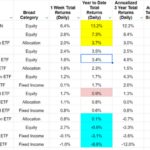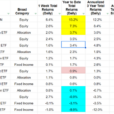
 Image Source: Pixabay
Image Source: Pixabay
Recent US economic data paints a complex picture of the financial environment, marked by stable interest and interbank rates coupled with significant movements in money supply and banking metrics. The interest rate remains steady at 5.5%, consistent with previous figures, suggesting that the Federal Reserve is maintaining a cautious approach toward rate adjustments amid ongoing inflationary pressures.In terms of liquidity, the Money Supply M0 and M1 have shown moderate fluctuations, indicating subtle shifts in the liquid assets available in the economy. Money Supply M0 increased slightly to $5,896,900 million from $5,843,700 million, while M1 saw a minor decrease. Such movements reflect ongoing adjustments in the financial system’s base money levels.The banking sector’s balance sheet and the Central Bank’s balance sheet continue to be robust, though slightly variable, reflecting the adjustments institutions are making in response to regulatory and economic changes. These changes are significant for understanding the broader economic and regulatory environment impacting financial institutions.Foreign Exchange Reserves and Loans to Private Sector data further reveal subtle shifts, with Foreign Exchange Reserves showing a slight decrease, which could impact the currency’s value and international trade dynamics. The stable growth in Loans to Private Sector underscores an ongoing confidence in economic growth prospects, despite broader challenges.On a broader scale, the inflation rate recorded a slight increase to 3.5% from 3.2%, aligning with persistently high inflation trends observed globally. This figure, together with the core inflation rate maintaining at 3.8%, underscores the continued cost pressures facing consumers and businesses. Notably, the Producer Prices Index showed a moderate rise, indicating ongoing pressures in the production sector that could translate into further consumer price increases.In response to inflation trends, Federal Reserve officials remain vigilant, with no immediate indications of rate cuts, aligning with the market’s expectations of a rate decrease possibly not occurring until September. This cautious stance is mirrored in the steady figures for the Effective Federal Funds Rate and other related rates, which have not shown significant changes, maintaining a tight monetary policy environment to counteract inflation pressures.Government spending has remained high, as indicated by the latest data showing an increase in government expenditures. For instance, government spending reached $3,887 billion in the most recent figures, marking the highest point in the recorded period. This increase in fiscal expenditure can stimulate economic activity, but it also raises concerns about its inflationary impact, especially in an environment where inflation rates are already elevated.2 Months AgoThe fiscal policy is further complicated by a significant budget deficit, where the government budget value shows a deficit of $236,457 million. This level of deficit spending implies that the government is spending more than it earns in revenue, which is financed by borrowing. This can lead to an increase in the national debt, as shown by the government debt figures reaching $34,586,533 million, the highest on record.Monetary policy, as administered by the Federal Reserve, has been focused on tightening, primarily through maintaining higher interest rates to temper inflation. The current interest rate holds steady at 5.5%, which is relatively high compared to historical lows. This policy aims to reduce inflation by slowing economic growth and curbing excessive spending.However, high government spending can counteract these efforts by injecting more money into the economy, potentially driving demand higher than what the tightened monetary conditions aim to achieve. This fiscal expansion in the face of monetary contraction can lead to conflicting economic signals and might making it challenging to control inflation effectively.More By This Author:U.S. Stocks Retreat Amid Hawkish Federal Reserve Stance And Mixed Corporate Earnings
WTI Crude Remains Above $86 Amid Middle East Tensions And US Inventory Build
U.S. Markets Tread Cautiously Ahead Of Inflation Data And Earnings Season















